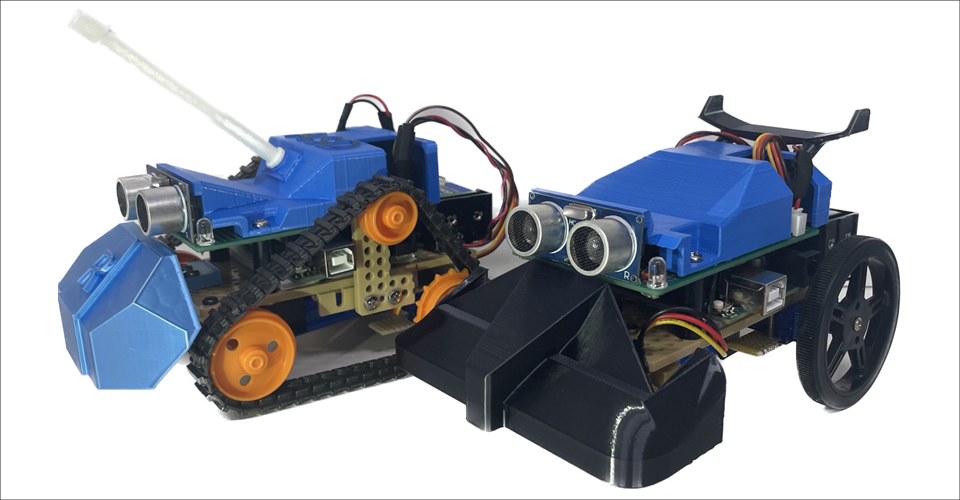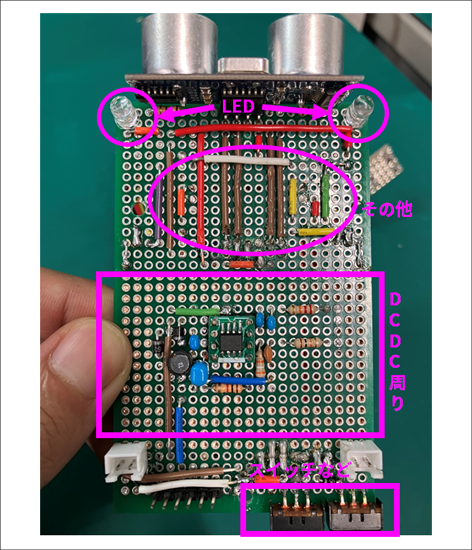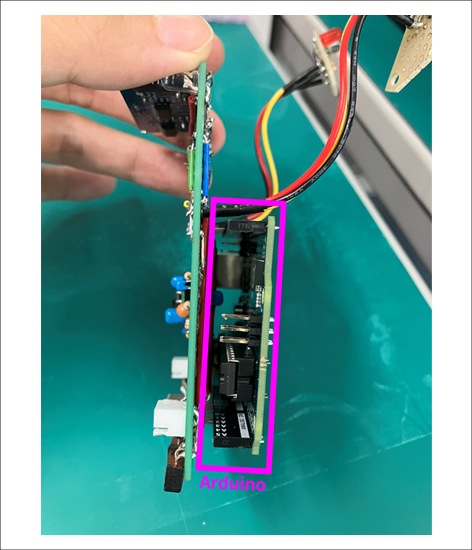Hello, 3 I studied chemistry in college until the moon and forgot about Ohm's law mountain fudo is.
I joined Macnica as a technician and learned the basics of electrical and electronics while building a line tracing car through practical training. Production training We did this.
We will be posting a total of 4 articles in a series where we can share what we learned and experienced through this production training, so please take a look at it with an open mind.
Introduction
What I made during this year's production training was a "line tracing car." Some people may not be familiar with this, but a line tracing car is a car that reads a black line and follows that line.
When I first heard about it, I was confused because I had an idea of how it would work, but I had no idea how it would work, but as I researched it, I realized that it wasn't all that difficult. The following site is the blog I relied on the most during my production training!
((https://deviceplus.jp/arduino/arduino-mo-ta-doraiba-1/))
First of all, I would like to show you the result. Even though I started the production training without any knowledge, I was able to create the work shown in Figure 1 over a period of three months. Even though I couldn't read circuit diagrams, I built a board like the one shown in Figure 2.



However, the purpose is not only to make a line tracing car through production training, but also to learn the basics of electricity, electronics, and power supplies! There are many sites out there if you just want to know how to make a line tracing car. However, there are probably very few people who make their own circuits from DC/DC converter circuits.
Therefore, the first part of this blog is a review of DC/DC converter specifications! Yes, the content jumps around from the start, and you're like, "Huh?" that's right. The same goes for my head at the beginning of my production training. However, the most troublesome point is the power supply!
Regarding DC/DC converter specifications review
Let's talk about the power supply, which is important for a line tracing car to work.
What is a DC/DC converter?
First of all, if you put a battery in something like a toy around you and it runs on its own, you have to think about how to distribute the battery's energy to the entire circuit. In this case, we will be supplying energy from the battery to the motor, but if we connect it as is, the motor will be damaged, so we use a DC/DC converter. Is it easy to understand? I drew a diagram (my own).

If you were to use a huge tank as a battery, and let it drink as is, the water pressure from the height would be too great and it would drown. Just like putting it in a cup to make it easier to drink, a 9V voltage would destroy the motor that wants to run at 6V, so we use a DC/DC converter to reduce the voltage to the 6V that the motor wants. Roughly speaking, it looks like this. (really roughly)
Necessary information
The motor I'll be using this time is this one (SG90-HV), and I chose it because it's a great compatibility with the Arduino, which is the brain. (Easy to program)
This has an operating range of 4.8V to 6V, with 6V being the fastest. (Although it's a bit dangerous) The current used is approximately 200mA to 300mA (this was not written down, so I did an experiment).
Based on this information, what is required as a DC/DC converter is:

This means that it meets these conditions!
Before choosing a DC/DC converter
Before choosing the DC/DC converter to use this time, you need to thoroughly learn about the detailed mechanism of DC/DC converters and how to select one. Please take a look at our website below! It is very easy to understand and I have read it many times. (Really)
・ Principles of step-up DC/DC converters and precautions when selecting devices
Also, for this mission we have to make a DC/DC converter using a universal board! (A board with holes for easy viewing as shown in Figure 2)
After all, soldering is the gateway to success for new engineers.
This means that you need to select something with this type of shape. (Figure 6)
Figure 6: Semiconductor
If you use an IC with this kind of package, you can put it on a universal board like the one around the DC/DC converter in Figure 2!
Summary
Up to this point, we have considered the specifications of the DC/DC converter. By comparing the voltage of the battery and the voltage and current required by the parts that receive energy, I wondered what kind of DC/DC converter would be needed. If you decide on a shape like Figure 6, you can narrow it down considerably!
In reality, there are many other things to consider besides input voltage, output voltage, and current, but this time we'll focus on reviewing DC/DC converter specifications! So, I think you have considered it.
next time
Next time, we will select the DC/DC converter and surrounding parts and get to the point where we actually solder them! The content may have been rather quick and vague, but please join me in making my line tracing car ^0^
That was the memorable first episode of Fudo, a rookie engineer.
List of articles on line tracing cars made from power supplies
・DC/DC converter specification study
・ DC/DC converter implementation preparation edition
